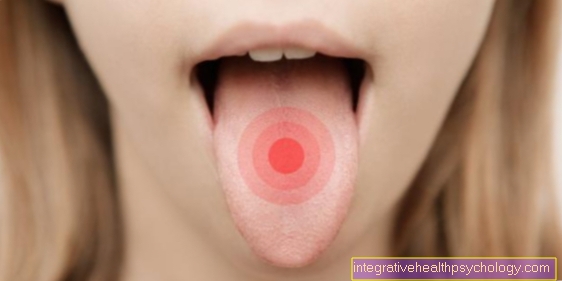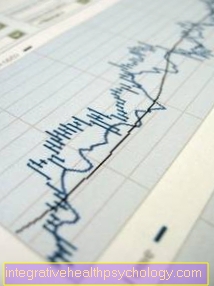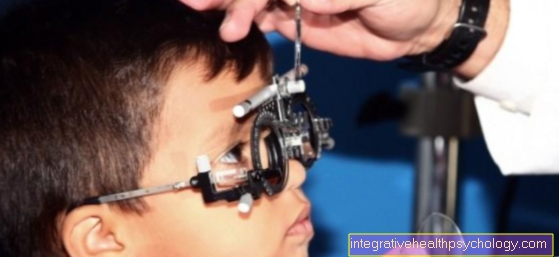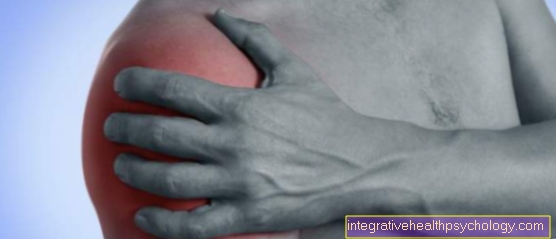Winter depression
definition
Many people know the indeterminate feeling that the approaching winter can trigger in one. The thought of long, cold nights and short days is anything but pleasant. In fact, there are a multitude of people who become mentally ill year after year from November to February. Such a phenomenon can affect both young and elderly people and is commonly referred to as winter depression. Because of the months in which such a disorder can occur, it should actually be called Autumn-Winter Depression. This can alternatively be used as a designation. Other names are e.g. Seasonal Depression, Seasonally Dependent Depression or SAD for short.

It has been known for hundreds of years that in the "dark season" of many people there can be a significant drop in mood, but also in performance. Everyday life is experienced as dreary and one would like to spend the whole day in bed.
Occurrence and distribution
There is very little reliable data on how many people ultimately suffer from winter depression. It is estimated that around 10% of the German population regularly have symptoms of the disorder. Women are typically 3-4 times more likely to be affected than men.
Winter depression can occur at any age. However, there seems to be an increased occurrence around the third decade of life. There is also evidence that patients diagnosed with winter depression in adulthood showed the first symptoms in childhood.
It was also observed that the parents of patients with winter depression often already had depressive symptoms, so that it is discussed whether hereditary components also play a role in winter depression.
The typical months in which a winter depression can break out are between the beginning of October and the end of February.
Symptoms

The typical symptoms that can occur as part of the disorder are:
- Sadness or depression, depressed mood
- Fatigue and prolonged sleep
- Social withdrawal
- Increased feeling of hunger
- irritability
- Lack of "pleasure" (disorders of the libido)
Sadness or depression:
Patients often report that it is very difficult for them to be happy about things that normally always gave them joy.
Hobbies or other pleasant activities are perceived as annoying or stressful rather than pleasant. Affected people are also often tormented by a great lack of perspective and by fear of the future.
Fatigue:
In contrast to non-seasonal depression, in which patients frequently suffer from severe sleep disorders, the symptoms in patients with winter depression are often characterized by permanent fatigue.
What makes this point even more difficult is that patients often do not experience the increased sleep as restful.
You might also be interested in: Sleep hygiene and how it can affect sleep
Social withdrawal:
Patients find it increasingly difficult to carry out their social tasks. This includes e.g. Obligations of a professional but also of a family nature. Patients often simply no longer have any drive to present themselves in public in order to deal with their everyday lives. Quite often, however, they try to appear “normal” at work right up to the end for fear of possible negative consequences.
Increased feeling of hunger:
This point, too, typically differs from “non-seasonal” depression. With this, the patients very often suffer from loss of appetite. In contrast, winter depression often leads to an increased feeling of hunger. It is especially sweets or carbohydrates that can be used quickly, which are preferred to be eaten.
Such eating behavior often results in significant weight gain, which in turn is experienced by the patient as very stressful.
Irritability:
To put it simply, “the fur” of patients with winter depression becomes thinner. Little things (noise, arguments, etc.) that the patient was still relaxed about in the summer can be experienced as much more stressful. This can lead to crying fits or outbursts of anger.
"Listlessness:
Typically, in any kind of depressed mood, sexual desire or excitability is significantly reduced or it is even lost (for the time of depression).
Diagnosis
Criteria for making a diagnosis:
Many people are at least partially familiar with the symptoms listed above. However, this does not mean that everyone is immediately depressed in winter. Rather, the diagnostic criteria that must be met in order to assign a diagnosis from the therapeutic point of view state:
- There must be a temporal connection between the occurrence of the above Symptoms and the season (autumn or winter).
- After the end of winter, there must be no more depressive symptoms.
- The symptoms must appear for at least 2 consecutive years in autumn or winter time
- The general criteria for depression according to DSM-IV must be met. The DSM-IV is a diagnostic guideline that is mainly used in English-speaking countries. The individual criteria are:
Five or more of the symptoms listed under 1 and 2 must be persistent and must lead to a reduction in performance and functional level:
- Depressed mood or loss of interest or pleasure
- And
- decreased self-esteem and self-confidence
- decreased focus and attention
- Feelings of guilt and feelings of worthlessness
- Negative and pessimistic future prospects
- Sleep disorder, waking up early
- Morning low, diurnal fluctuations in symptoms
- Psychomotor inhibition or restlessness
- Decreased appetite, weight loss
- Loss of libido, lack of sexual interest
- Lack of responses to good things
The criteria also include that the minimum duration of persistent symptoms is> 2 weeks and that the symptoms are not caused by a physical illness or the use of addictive substances.
Bipolar affective disorders (manic depression) must be differentiated as well as grief reactions, even if the depressive episodes show an identical picture.
In addition, the predominant clinical picture can be described more precisely by assessing the degree of severity (mild, moderate, severe), the presence of physical or psychotic symptoms, melancholy and recurring or seasonally dependent courses. In most cases, it is a "slight degree of severity." ”.
causes
In order to understand the origin of such a disorder, it is necessary to explain some basics:
Everyone is subject to a so-called day-night rhythm (circadian rhythm), which, to put it simply, ensures that we sleep when it is night and that we are awake when the sun is shining. Regular timers (such as sunlight) are required for this rhythm to work at all. If you deny a person such a timer, the day-night rhythm gets mixed up. This can e.g. observed in prisoners who live days and nights in constant darkness. Excessive night and disco life can also lead to a change in the day-night rhythm.
When the nights get longer and the days get shorter in winter, the stimuli for the "setting" of the day-night rhythm change. It is believed that this (among other changes) can lead to a depressive mood.
A decrease in so-called "serotonin" is now responsible for this development. Serotonin, popularly known as the “happiness hormone”, is a so-called “neurotransmitter”, ie a messenger substance that transmits information between nerve cells. Nowadays it is assumed that serotonin in particular is responsible for a balanced mood. The serotonin is typically released into the blood during the day. To do this, however, you need a stimulus beforehand to switch the brain to "daytime activity". These signals are given less in winter due to a changed and shortened incidence of light in the eye.
Directly related to serotonin, the so-called “melatonin”, also popularly known as “sleep hormone”, must be mentioned at this point. This melatonin naturally provides i.a. for the body to go into a deep sleep phase at night. A direct incidence of light in the eye (timer light) now ensures that in the morning the melatonin production is stopped and the (above-mentioned) serotonin production and release into the blood is increased. In winter in our latitudes there are fewer stimuli that stop melanin production due to the long nights. This results in increased melatonin and decreased serotonin levels.
We now know that a permanently low serotonin level (or increased melatonin level) increases the likelihood of developing depressive symptoms.
Read more on this topic: The role of serotonin / neurotransmitters in depression
Note: Warning from the author
For this reason, we expressly warn against the use of melatonin products from abroad and from internet pharmacies that are not prescribed by a doctor!
Vitamin D deficiency as a cause?
For most people, daylight has an important influence on mood. For some, this influence is so essential that they can develop depression when there is a lack of daylight. The connection between depression or winter depression in particular and a vitamin D deficiency is and has been the subject of numerous studies. Vitamin D is only sufficiently produced by the body when it has enough daylight available. If this is not the case, there may be a vitamin D deficiency. This leads to symptoms such as increased bone fragility and bone pain. The common denominator of winter depression and vitamin D deficiency seems to be the lack of daylight. Some studies have shown that the lack of vitamin D, which in turn arises from the lack of light in the winter months, could be a causal factor in the development of winter depression. In several studies, vitamin D levels were found to be too low in patients with depression. A study also compared the effect of light therapy with that of vitamin D substitution in depressed patients. In these studies, vitamin D administration had a stronger effect. Other studies have not found a definite link between vitamin D and depression. Accordingly, there are currently no recommendations for regular vitamin D substitution in depressed patients. It is possible to determine the vitamin D level of patients suffering from winter depression. If this is too low, substitution therapy with vitamin D can be started. However, it should be mentioned that in healthy people who regularly get into the fresh air, a vitamin D deficiency is rare. It is much more common in older people (or young people who mainly sit at the computer during the day) who are tied to a house or apartment and rarely get outside. People who work continuously at night and sleep during the day can also have an increased risk of vitamin D deficiency.
Read more on the topic: What role do vitamins play in depression?
Is there a winter depression also in summer?
No. By definition, winter depression occurs in winter. As already described above, it is assumed that the lack of daylight plays a bigger role. Seasonal depression can recur, but it does not occur in summer. If a depression, which has previously only occurred in the winter months, also occurs in summer, one can, by definition, no longer speak of a seasonal or winter depression.
Differential diagnoses
There are quite a few diseases in which the symptoms listed above can also occur (at least in part). Typically one should think of:
- Depressive episode (see also topic depression)
- Schizophrenia (see also topic schizophrenia)
- Physical illnesses (e.g. anemia, thyroid disorders, infections, etc.). However, physical and blood tests are often used to diagnose and treat these types of conditions.
therapy
As with many diseases, the symptoms and their intensity determine the therapy.
Based on the causes of winter depression, however, it is above all the supply of light (light therapy) that should be the starting point for treatment. If this is not enough, the patient must be discussed about drug antidepressant treatment (see also the topic of antidepressants here).
Read more about this under: How can you overcome depression?
Winter depression medication
Depending on the severity of the depression, drug treatment may be necessary. Various active ingredients are available for this. The importance of vitamin D was already explained in the previous section. There is currently insufficient evidence that vitamin D has a positive effect in the treatment of depression, so that it is not yet recommended as a standard therapy. In patients with a too low vitamin D level, however, vitamin D substitution can be used as a therapeutic attempt.
If the depression is severe or moderate, drug antidepressant therapy is usually required. This does not differ from the drug therapy for non-seasonal depression. Drugs from the group of selective serotonin reuptake inhibitors (SSRIs) are the first choice. These include, for example, citalopram, escitalopram and sertraline (e.g. Zoloft®). There are other drug groups that are used for antidepressant therapy, for example the tricyclic antidepressants (amitriptyline, opipramol), the selective noradrenaline reuptake inhibitors (reboxetine), the selective serotonin and noradrenaline reuptake inhibitors (venlafaxine, duloxetine inhibitors, the MAOlafaxine, duloxetine inhibitors) Tranylcipromine) and the active ingredients mirtazapine and mianserine. The treating psychiatrist decides which medication is best to use depending on the patient's medical history, previous medical treatment and previous illnesses.
Would you like to find out more about this topic? Then you might also be interested in: These drugs help with depression
Johannis herbs
St. John's wort (Hypericum perforatum) is a herbal remedy that is used as a medicinal plant. The part in St. John's wort that has an effect is the hypericin. St. John's wort is used to treat mild to moderate depression and to treat anxiety. In the current guidelines for the treatment of depression, St. John's wort is mentioned as a therapy option in the sense of a first attempt at therapy for the treatment of mild to moderate depression. So far there are not enough qualitatively satisfactory studies that prove the effectiveness of St. John's wort, especially in comparison with antidepressants. St. John's wort can be purchased in the pharmacy without a prescription. It is often used on its own by patients with mild depression. It is important, however, that St. John's wort, although it is a herbal remedy, has numerous interactions with other drugs. The attending physician should therefore be informed about the intake of St. John's wort. Otherwise, overdosing or underdosing of certain drugs caused by St. John's wort can lead to serious complications. The skin's increased sensitivity to light must also be taken into account.
You might also be interested in: What over-the-counter antidepressants are there?
homeopathy
In homeopathy, numerous remedies are specified that can be used for winter depression. They are said to have increased drive and lightened mood. However, due to the low dosage of the active ingredients, their effect is controversial and so they are only suitable for treating mild depression. If there is no visible improvement in the symptoms or if anything is unclear, a doctor should definitely be consulted to discuss how to proceed.
The homeopathically used remedies for winter depression include, for example, Arsenicum album (arsenic), Aurum (gold), Calcium carbonicum (calcium carbonate), Carbo vegetabilis (charcoal), Causticum (quick lime), Helleborus (snow rose), Ignatia (Ignatius bean), Lycopodium ( Bärlappe), Natrium muriaticum (table salt), Phosphoricum acidum (phosphoric acid), Pulsatilla pratensis (pasque flower), Rhus toxicodendron (poison oak), Sepia officinalis (squid), Stannum metallicum (tin), Sulfur (sulfur) and Veratrum album (white Germer) . The trusted homeopath knows which remedy is suitable in each individual case and how it should be used.
Read more on this topic under: Homeopathy for winter depression
light therapy
What is light therapy?
In light therapy, the patient sits in front of a so-called "light shower" at a distance of 50 - 90 cm. This is a special lamp whose light is similar to sunlight. It must have a luminosity of at least 2,500 lux. Modern devices that are used in light therapy often even have a luminosity that goes up to 10,000 lux (corresponds to the luminosity of 10,000 candles).
The patient now sits in front of this lamp with his eyes open and looks into the light for a few seconds. Then he looks at the floor or in a book so as not to strain or damage the eyes too much. For the next 20-30 minutes, the patient should look fully into the light for a few seconds every minute.
Overall, one session should take place per day and this for at least a few days. It has been shown that the results obtained are better if the session takes place immediately after getting up (immediate signal to stop melatonin production). Light therapy is also used quite successfully for other forms of depression.
Occasional sleep disorders, headaches and in very rare cases (hypo-) mania (see also the topic of mania) are described as side effects.
However, attention must be paid to any medication that is taken in parallel to light therapy.
Quite a few drugs (including herbal ones such as St. John's wort) increase the sensitivity to light and can thus possibly cause skin damage. St. John's wort in particular is often prescribed by doctors as a herbal therapy for mild winter depression. You should therefore definitely talk to your doctor about long-term medication and light therapy. You can find more about St. John's wort under our topic St. John's wort.
Read more about this under Light therapy for depression
As further measures for the therapy of winter depression, exercise in the open air (especially morning exercise and long walks) and a "winter escape vacation" have turned out to be, during which the "critical" months (at least in part) are spent in countries with a higher probability of sunshine.
In sport, there are two main mechanisms that work. On the one hand, daylight has a positive effect on the release of serotonin and, on the other hand, regular exercise increases general body awareness, which in principle also has an antidepressant effect. Endurance sports in particular have proven to be particularly effective in raising serotonin levels.
You can find more information about endurance sports for “beginners” under our topic: Endurance sports
Which lamp can help?
Most psychiatric clinics or institutions offer light therapy. But nowadays the private purchase of a suitable lamp is also affordable. It should be ensured that the lamp has sufficient light intensity (at least 2,500, better 10,000 lux) and a UV filter. However, the UV filter is now available in almost all common devices. You can buy decent devices from around 100 euros.
Does the solarium also help?
No, on the contrary. With a light therapy lamp, the harmful UV light is filtered out because it is only about the amount of daylight in the light. In the solarium, on the other hand, UV light is desirable because it causes the skin to tan. As a rule, safety glasses should be worn in tanning beds as the light is harmful to both the eyes. It is also harmful to the skin if it is used in excess. The solarium is in no way an alternative to light therapy.
Prevent
To prevent winter depression, among other things, the serotonin level in the body can be increased. Serotonin is also known as the happiness hormone and, in addition to regulating the sleep-wake rhythm, also improves mood. A lack of serotonin is often associated with depression.
Various household tips can be used to increase serotonin levels in the body.
For example, you should spend at least one hour outdoors per day and, if possible, during the hours of sunshine (no matter if it is cloudy or not) Go for a walk, bike ride, or jog. The main thing is that you have some physical activity; it is best to do these activities in the morning and, if possible, in pairs or in a small group. Gardening and outdoor handicrafts are also well suited for this.
Sporty less ambitious people can dare to try new things and do yoga or relaxation exercises outdoors on a meadow with a sleeping mat, and thus prevent winter depression.
A short vacation by the sea, as well as a snow hike or sledging are recommended.
In terms of nutrition, it is advisable to eat low-carbohydrate and generally light foods such as fresh fruit and vegetables. In moderation, sweets, especially dark chocolate, are good for mental well-being, as they can convert substances in the body into serotonin.
In general, when people dress in bright colors, they mimick the colors of the sun. This is good for our psychological well-being, especially when there are so few hours of sunshine. Colors such as red, orange and yellow are well suited for this. The surroundings in the house or in the room can also be decorated with bright colors and thus place the colors of the sun in everyday life.
To prevent winter depression, our sense of smell can also be involved. Fragrances that remind us of summer, such as jasmine oil, can help prevent winter depression. To do this, you can use scented candles or scented oil, or take a hot bath with the appropriate bath additive.
It is just as effective to listen to your favorite music, sing along and dance to it, because movement in general is good for body, mind and soul and leads to the release of serotonin in the human body.
Furthermore, it is particularly important to have positive thoughts and to put yourself in a good mood in your own way, for example with activities that are fun.
For moderate to severe winter depression, light therapy is recommended at the beginning of the winter season. Here you sit down once a day for about a week in front of a light full spectrum lamp that imitates daylight. This can be done in the morning while having breakfast by simply turning the lamp on and illuminating you. The effort is very little with very great benefits.
However, if there is no improvement, it is advisable to consult a doctor and possibly to work with long-term therapy with low-dose antidepressants. Psychotherapeutic discussions can also reduce the likelihood of winter depression and / or reduce the symptoms many times over.
As with almost all types of depression, it is also very important to maintain social contacts and do something with friends more often with winter depression. Because a healthy and strong social support can prevent depression and thus also winter depression.
Are there any tests for winter depression?
As described above, winter depression is similar to non-seasonal depression in many ways, except that it occurs primarily in the dark winter months. Since most symptoms of winter depression are similar to those of non-seasonal depression, a special test for winter depression is not actually absolutely necessary; general depression tests can be used.
Psychiatrists and psychologists have several different test procedures to better assess the severity, extent and character of depression. But there is also the possibility for medical laypersons to take a test to determine whether they may be suffering from depression. An example of such a test can be found online on the Deutsche Depressionshilfe website. 9 questions can be answered on this page. There are 5 predefined answer options available for each answer. The questions concern the ability to be happy and interested, mood, sleep disorders, drive, appetite, self-esteem, ability to concentrate, motor skills and suicidality. The answers can be given with one click, and the questionnaire is evaluated immediately afterwards. In the layman's field, in addition to the experienced depression self-tests, there are actually tests that specifically relate to the presence of winter depression. These can be found in various forms on the Internet. For example, they ask about the frequency of social contacts, eating habits, sleeping habits and mood during the winter months. In general, such a self-test can provide some information about whether it is likely that depression is present. However, the diagnosis itself is always made by the doctor, not the online test. Therefore, if you suspect the presence of depression (in yourself, but also in relatives), you should visit the treating family doctor promptly, who will then initiate the next steps.
Signs
If signs of winter depression can be seen, it is advisable to heed the tips above.
Signs of winter depression include:
- general listlessness and lack of drive,
- subdued mood and irritability,
- Imbalance,
- higher need for sleep than normal and
- Neglect of the social environment.
If the symptoms do not subside or even increase, it is advisable to consult a doctor.
To learn more about other types of depression, please click here.

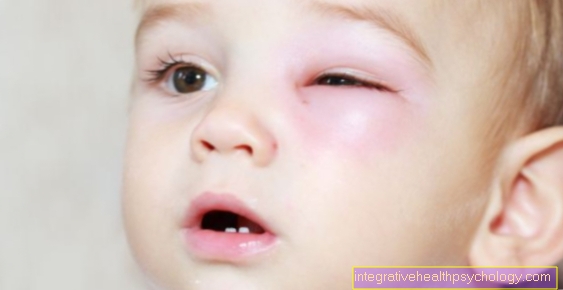
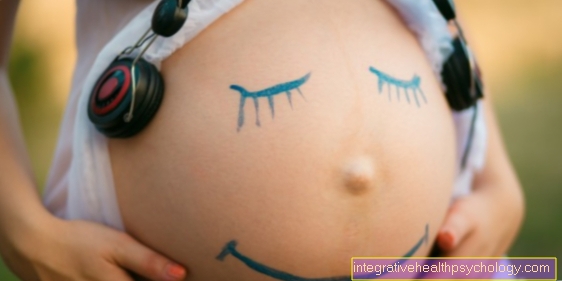

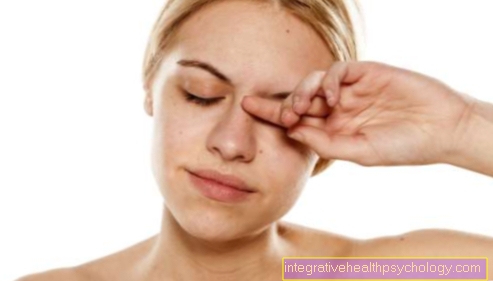
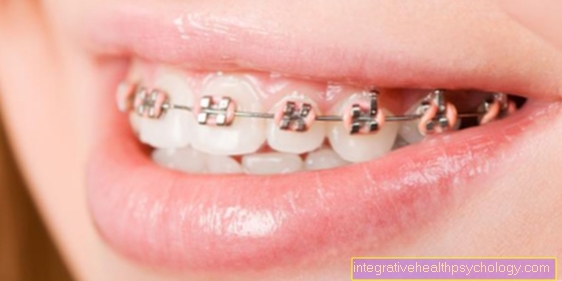

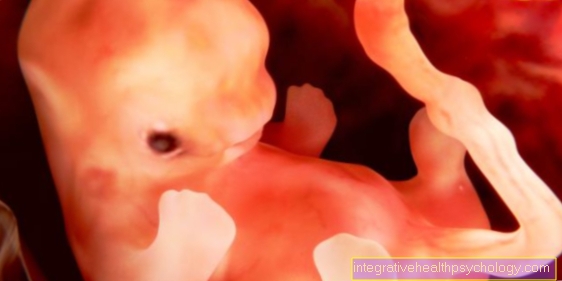

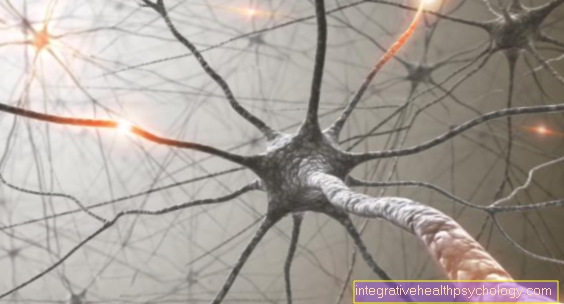


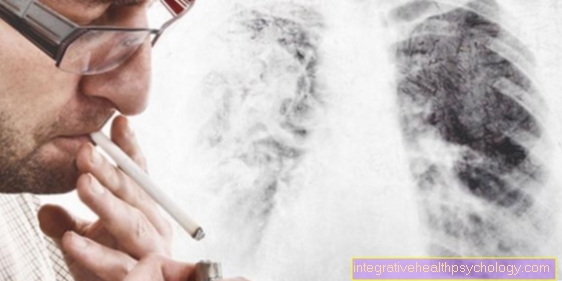
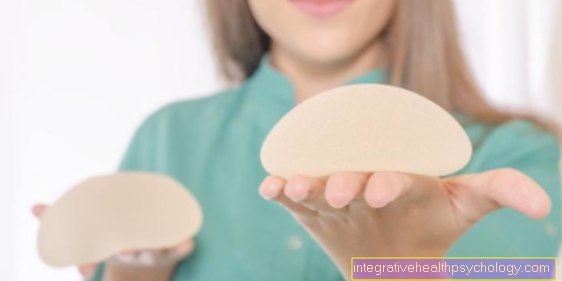
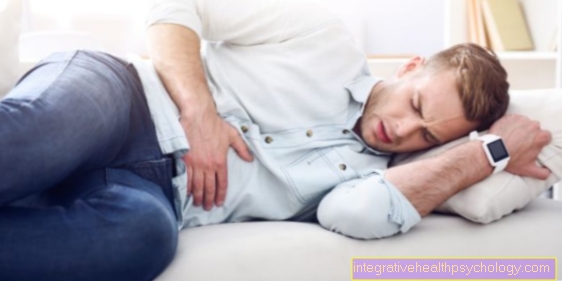
.jpg)



